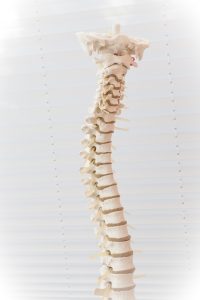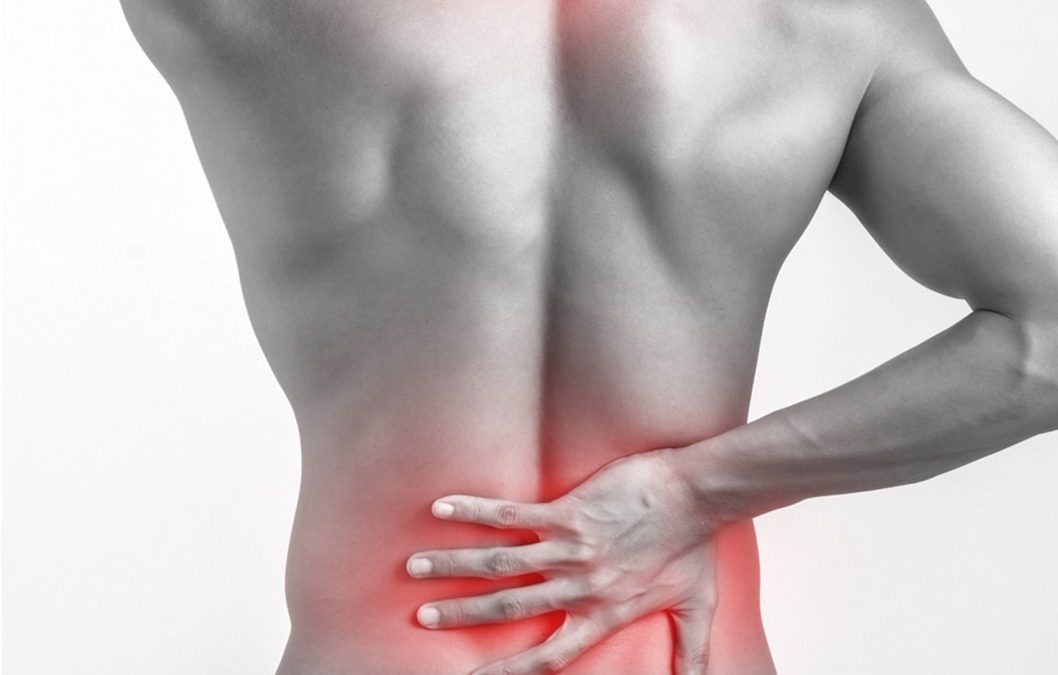What is degenerative disc disease?
First off, let’s discuss discs. Intervertebral discs are shock-absorbing cushions located between each vertebrae in the spine. As we age, the discs dry out and become dehydrated. Once they start to lose their hydration, they become more prone to injury and lose their important protective properties – mainly shock absorption. However, degenerative disc disease is not actually a disease as it is a natural part of ageing. Thus, it is a normal age-related process that occurs in the human body.

Degenerative Disc Disease – Spinal Cord
What area of the body does degenerative disc disease affect? What are the common symptoms?
Degenerative disc disease can affect any of the discs in the spine, but most commonly affects the cervical and lumbar regions. The neck and the lower back are mostly affected because these are the areas required for most of our motion in daily life. They are also the areas that are put under the most load which puts pressure on the discs. Fortunately, in the majority of cases, degenerative disc disease can be treated non-surgically and does not result in long-term disability. As for the symptoms of degenerative disc disease, they vary widely. Some people experience no symptoms at all. Others may experience dull aching pain, while certain people may experience nerve-like symptoms such as weakness, numbness, or sharp pains into the arms or legs.
What behaviours causes degenerative disc disease?
The cause of degenerative disc disease is the centre of a large debate in physiotherapy. Some physios may recommend to never load the spine in flexion (or bending over). This is where the “bending from the knees” when lifting idea comes from. However, as emphasised by many studies about disc degeneration, it is a natural part of the ageing process(1). In fact, a study that looked at the incidence of disc degeneration on MRI in adults aged 50 to 59, 80% of those adults had signs of disc degeneration(1). Even in adults aged 30-39, 52% showed disc degeneration on their imaging(1). However, not all of these adults with positive findings had symptoms or even pain(1). This highlights that a radiological diagnosis of disc degeneration does not correlate with pain and disability(2).

Degenerative Disc Disease – bending example
How does physiotherapy help with degenerative disc disease?
Referring back to the study above, if a radiological diagnosis of disc degeneration does not predict pain and disability alone, then other factors must play a role. Therefore, physiotherapists can help by taking a holistic approach. Rehabilitation for degenerative disc disease should address physical factors, lifestyle factors, as well as psychological factors. This approach to rehabilitation should be tailored to the individual. For instance, rehabilitation for someone who presents with disc degeneration and pain after a stressful day at the office may include lifestyle modifications to avoid sitting for long periods of time. The rehabilitation may also address psychological factors and the impact of stress by suggesting stress-relieving techniques or utilising manual techniques for relieving tension.
How long does degenerative disc disease take to recover?
Due to degenerative disc disease being considered a natural part of ageing, it is virtually impossible to repair the disc. However, rather than repairing the disc itself, rehabilitation may include strength training to build up the body’s ability to transfer load and absorb shock. In other words, recovery will involve adopting strategies to replace the job of hydrated discs. Typical recovery time is different for everyone; however, a regular exercise routine will need to become a lifelong habit to avoid flare-ups.

Jen Spero – Physiotherapist at Primal Physiotherapy Camberwell
About Jen Spero & Primal Physiotherapy Jen graduated from the University of Melbourne with a Doctor of Physiotherapy. Having worked in the physiotherapy industry for a number of years in the USA, Jen brings a high level of expertise to the team. Jen‘s clinical knowledge and enthusiasm for living an active lifestyle makes her the perfect physio for those looking to get back on track. Like a true Melbournian, Jen enjoys hiking, painting and looking after her plant babies. Andreas is a Physiotherapist at Primal Physiotherapy which is a leading Physiotherapy clinic with state of the art rehab facility to help their clients return back to life, work, and exercise pain-free. Primal Physiotherapy Braybrook 10/227 Ballarat Rd Braybrook VIC 3019 (03) 9995 8044 https://primalphysiotherapy.com.au/braybrook Primal Physiotherapy Taylors Hill 127 Gourlay Rd Taylors Hill VIC 3037 (03) 8315 7182 https://primalphysiotherapy.com.au/taylors-hill Primal Physiotherapy Camberwell 782 Burke Rd Camberwell VIC 3124 (03) 9973 3090 https://primalphysiotherapy.com.au/camberwell

